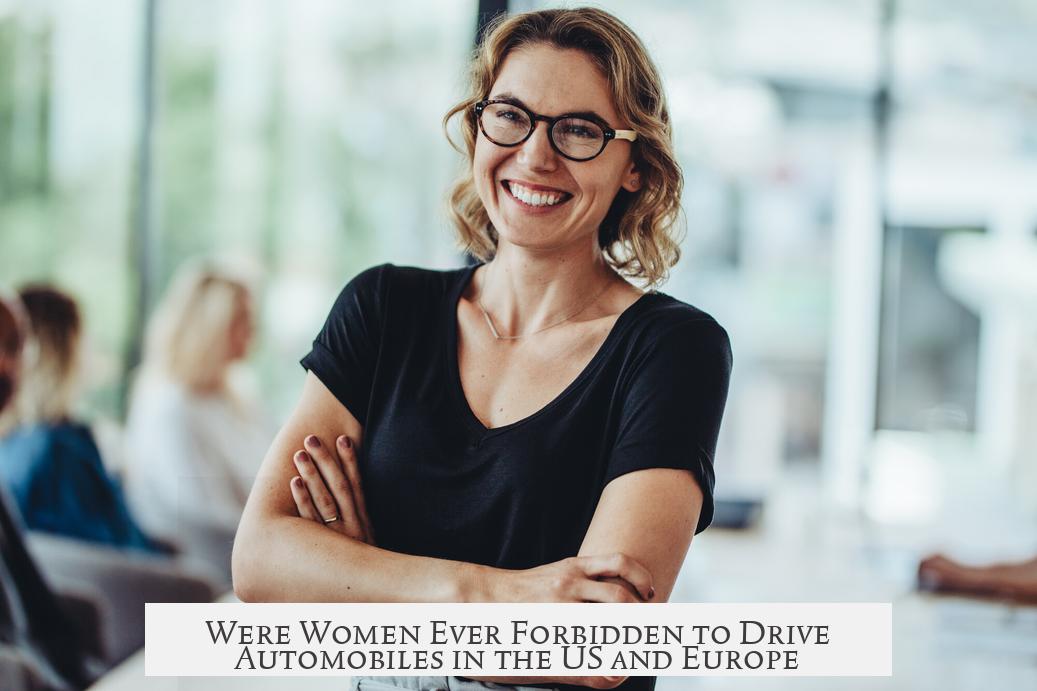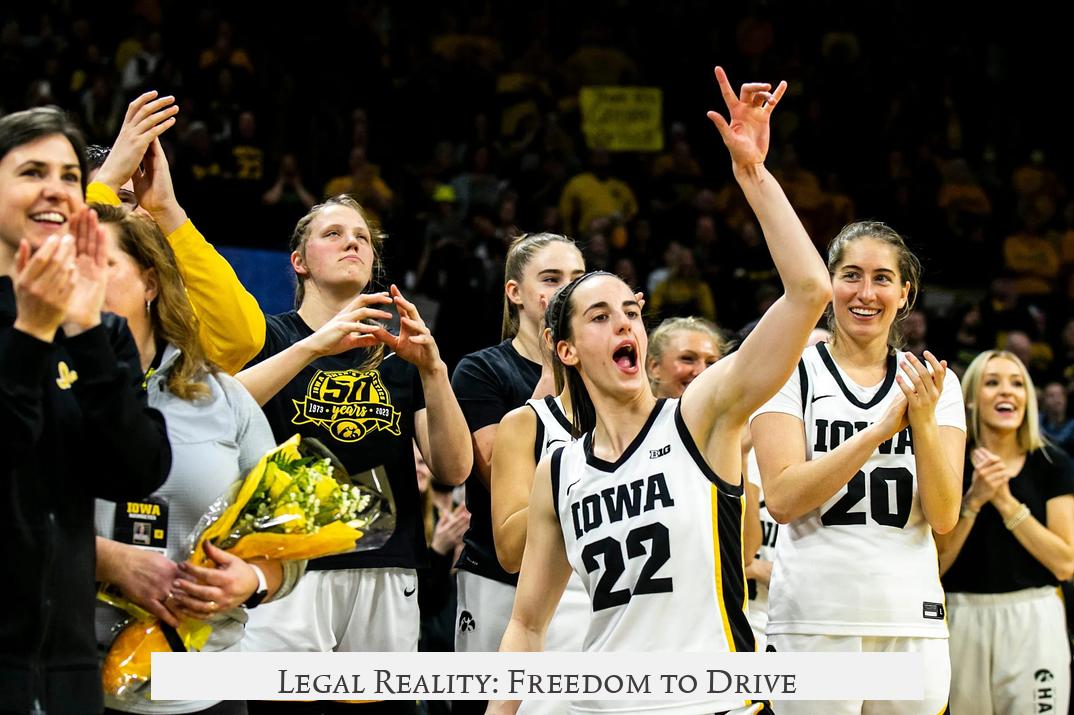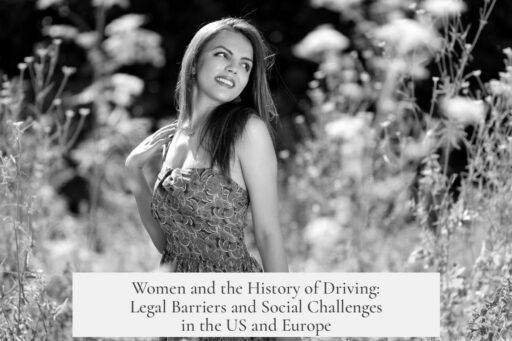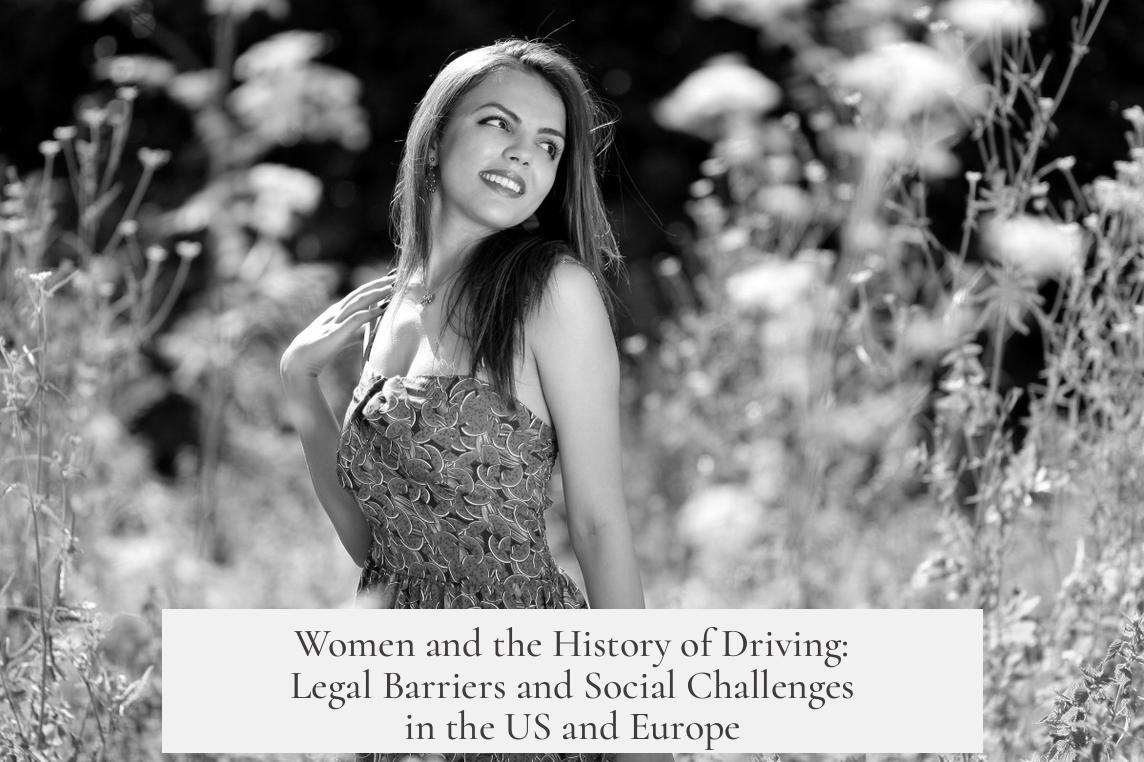Women were never legally forbidden to drive automobiles in the United States or Europe. In the U.S., from the early days of motoring, no laws explicitly prohibited women from obtaining driver’s licenses or owning cars. Europe followed a similar legal framework, although cultural and social attitudes often imposed informal constraints.
In the United States, Anne French became the first woman to receive a driver’s license in 1900. By the 1910s and 1920s, car manufacturers recognized women as an important market segment. Early automobile companies adjusted marketing strategies to attract female buyers, especially after the invention of the electric starter. This device eliminated the need for manual cranking, which had posed a physical challenge for many women. Advertisements often highlighted styling, comfort, and ease of use to appeal to female consumers.
Despite the absence of legal restrictions, women sometimes faced social barriers. It was conceivable that family members, such as husbands or fathers, might have prevented women from driving. However, this was not a widespread or enforced norm. Societal attitudes varied widely depending on region and community.
The main practical obstacle for early female drivers was the physical exertion required to start gasoline-powered cars. Before electric starters became common in the late 1910s, starting a car involved hand-cranking, which limited access for some women. To address this, electric automobiles like the Detroit Electric, Babcock Electric, and Baker Electric brands marketed themselves as easier-to-use alternatives. These models emphasized simplicity and accessibility, catering to women who faced challenges with gasoline engines.
The Girl Scouts issued automobile badges as early as 1916, reflecting the early encouragement of driving skills among girls. Female drivers quickly became a notable market force by the 1920s, shaping the industry’s approach to vehicle design and promotion.
| Aspect | Details |
|---|---|
| Legal Status in US | No legal ban; women licensed since 1900 |
| Marketing to Women | Electric starters promoted for ease; focus on comfort/style |
| Social Barriers | Individual family restrictions possible but not typical |
| Obstacles | Physical effort to start gasoline cars pre-electric starter |
| Alternatives | Electric cars marketed for ease of use (early 1900s) |
- Women were never legally banned from driving in US/Europe.
- Early female drivers received licenses by 1900 in the US.
- Electric starters expanded driving access to women.
- Marketing targeted women, highlighting convenience and comfort.
- Social but not legal restrictions could limit driving.
Were Women Ever Forbidden to Drive Automobiles in the US and Europe?

The quick answer is no: women were never legally forbidden to drive automobiles in the United States or Europe. But let’s unpack this with some juicy history, fascinating facts, and a touch of cultural insight. Because the subject is far richer and more interesting than a simple yes or no.
Imagine it’s the early 1900s. Automobiles are the shiny new gadgets everyone wants. No local laws say women can’t get behind the wheel, but the social landscape is a different beast.
Legal Reality: Freedom to Drive

It’s a crucial fact: in the US, no laws barred women from driving at any point. Anne French made headlines in 1900 as the first woman licensed to drive. This strays from the popular myth that women were “banned” like in some odd dystopian tale.
Why isn’t this well-known? Possibly because the common struggles of women often play out socially rather than legally. In other words, the law quietly allowed it, but culture played referee.
Early Adoption and Clever Marketing

Automakers were clever early on. Did they market cars to women? Absolutely.
- By 1916, the Girl Scouts even handed out automobiles badges to girls who qualified.
- In the roaring ’20s, manufacturer adverts specifically aimed at female drivers appeared. They placed an emphasis on convenience—especially after 1911, once the electric starter was invented.
- Before that, starting a gasoline-powered car was a physical challenge because you had to crank it manually. This effort labeled driving as “hard work,” a hurdle which skewed perceptions about who should drive.
- Electric starters changed the game by eliminating the need for cranking. Suddenly, starting your car was as easy as flicking a switch, and advertising quickly followed suit, focusing on style and comfort aimed at women.
This represents a unique moment where technology and marketing joined forces to open the road to women, who might otherwise have been discouraged by the physical demands of early cars.
The Social Roadblocks

Now for the elephant in the room — social restrictions. Could husband or father forbid a wife or daughter from driving? Of course. But this was a personal barrier, not a legal one.
These individual actions weren’t the norm, but they existed. Family dynamics, society’s expectations around gender roles, and safety concerns all played a part. Driving wasn’t just about the law; it was about culture and personal beliefs.
For example, a man might think, “Why would my wife need to drive when I’ll be the chauffeur?” This attitude slowed down broader social acceptance but never legally curtailed driving rights for women.
Obstacles and Alternatives: The Electric Car Niche

Here’s a neat historical twist: early electric cars like the Detroit Electric, Babcock Electric, and Baker Electric cars were marketed as gentler, easier-to-handle vehicles perfect for women.
Why? Because they didn’t require cranking. Sure, gasoline cars eventually became cheaper and outperformed electric ones, but this niche market made driving accessible to many women early on who might have otherwise felt left out by the physical difficulty of gasoline cars.
The European Context

What about Europe? While women’s legal rights to drive varied slightly between countries, outright legal bans were very rare and short-lived if they existed at all.
Take the UK, for example. Women’s driving rights were never explicitly denied by law, and women like Dorothy Levitt, an early 20th-century motoring champion and author, were celebrated pioneers of female driving.
In some European parts, social norms and class barriers affected who got behind the wheel more than the law did. Strict social conventions sometimes limited women’s freedom but didn’t create hard legal prohibitions against driving.
Why Does This Matter Today?

This history challenges some common assumptions. Many people believe women had to fight legal bans on driving like a medieval quest. Instead, the battle was often social and technological.
Understanding this distinction helps us appreciate the combined impact of innovation, culture, and advertising on women’s mobility. It’s a reminder that progress often comes from clever tech, smart marketing, and gradual social shifts, not just laws.
A Peek into Advertising History
Here’s a quirky thought: car ads from the 1920s to 1930s often depicted serene, stylish women at the wheel. They targeted female consumers by touting features like “ease of use” and “comfort,” rather than speed or horsepower, recognizing different priorities.
Manufacturers like Baker Electric leveraged such campaigns as a way to both empower women and grow their market share. It’s the early 20th-century equivalent of inclusive marketing—except instead of hashtags, they showed comfy car interiors.
Wrapping It Up
So, were women ever forbidden to drive automobiles in the US or Europe?
No, they weren’t legally forbidden. The obstacles were social and technological, not codified laws.
Electric cars pitched as “woman-friendly” helped overcome physical barriers. Marketing campaigns soon followed to entice women drivers as a booming market. Individual family restrictions occurred, but they weren’t universal.
It’s a fascinating blend of culture, technology, and economy shaping driving history. And it makes you wonder: how do modern assumptions about gender and driving still reflect deeper social norms instead of legal realities?
Next time you toggle your car’s start button, remember the electric starter’s role in opening the door for many early female drivers. Progress often comes in small, overlooked packages.
Curious to dive deeper into vintage car ads or early driving badges for girls? They’re fun history lessons on how something as simple as driving can reflect big social changes.




